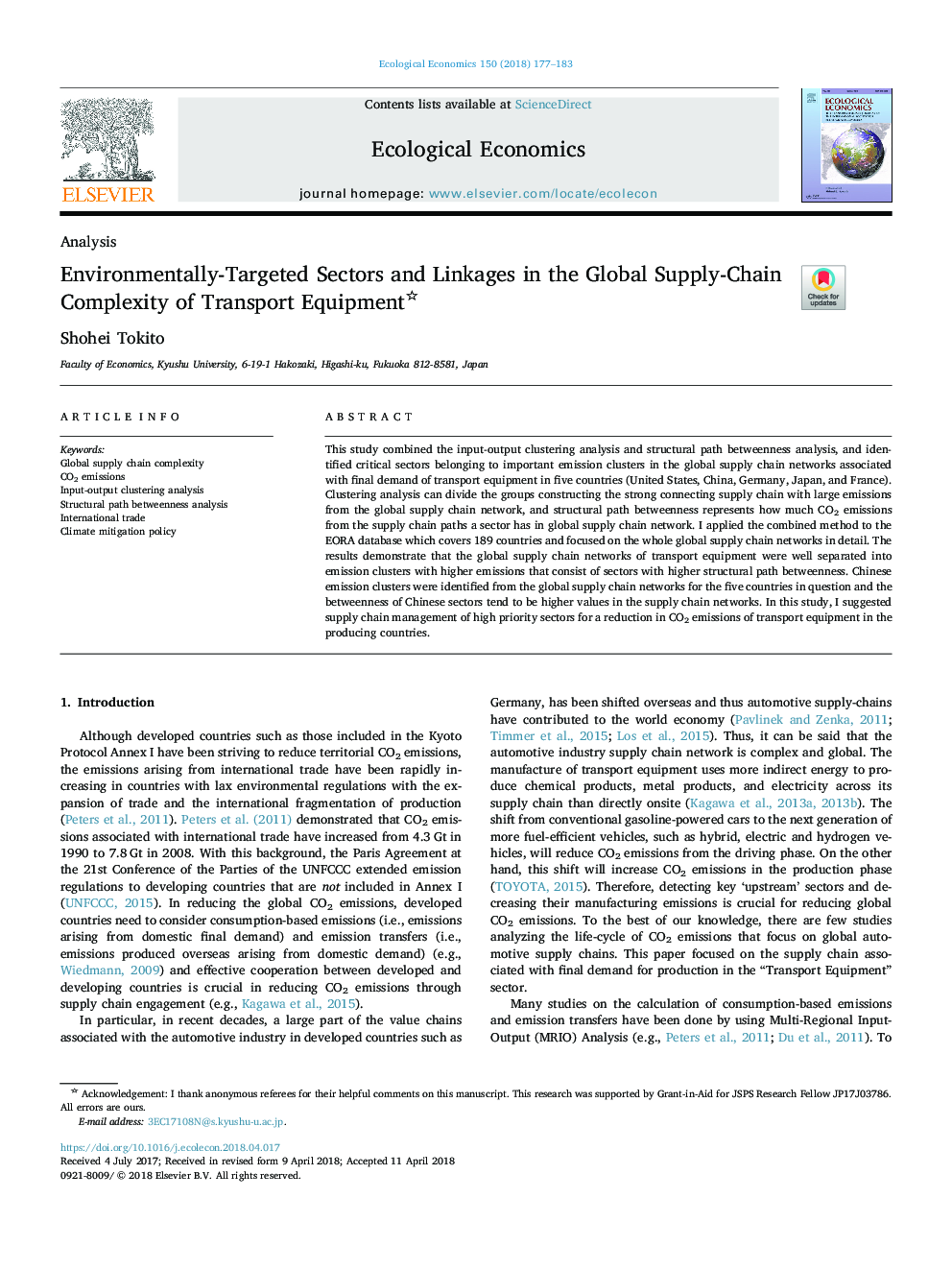| Article ID | Journal | Published Year | Pages | File Type |
|---|---|---|---|---|
| 7344065 | Ecological Economics | 2018 | 7 Pages |
Abstract
This study combined the input-output clustering analysis and structural path betweenness analysis, and identified critical sectors belonging to important emission clusters in the global supply chain networks associated with final demand of transport equipment in five countries (United States, China, Germany, Japan, and France). Clustering analysis can divide the groups constructing the strong connecting supply chain with large emissions from the global supply chain network, and structural path betweenness represents how much CO2 emissions from the supply chain paths a sector has in global supply chain network. I applied the combined method to the EORA database which covers 189 countries and focused on the whole global supply chain networks in detail. The results demonstrate that the global supply chain networks of transport equipment were well separated into emission clusters with higher emissions that consist of sectors with higher structural path betweenness. Chinese emission clusters were identified from the global supply chain networks for the five countries in question and the betweenness of Chinese sectors tend to be higher values in the supply chain networks. In this study, I suggested supply chain management of high priority sectors for a reduction in CO2 emissions of transport equipment in the producing countries.
Related Topics
Life Sciences
Agricultural and Biological Sciences
Ecology, Evolution, Behavior and Systematics
Authors
Shohei Tokito,
